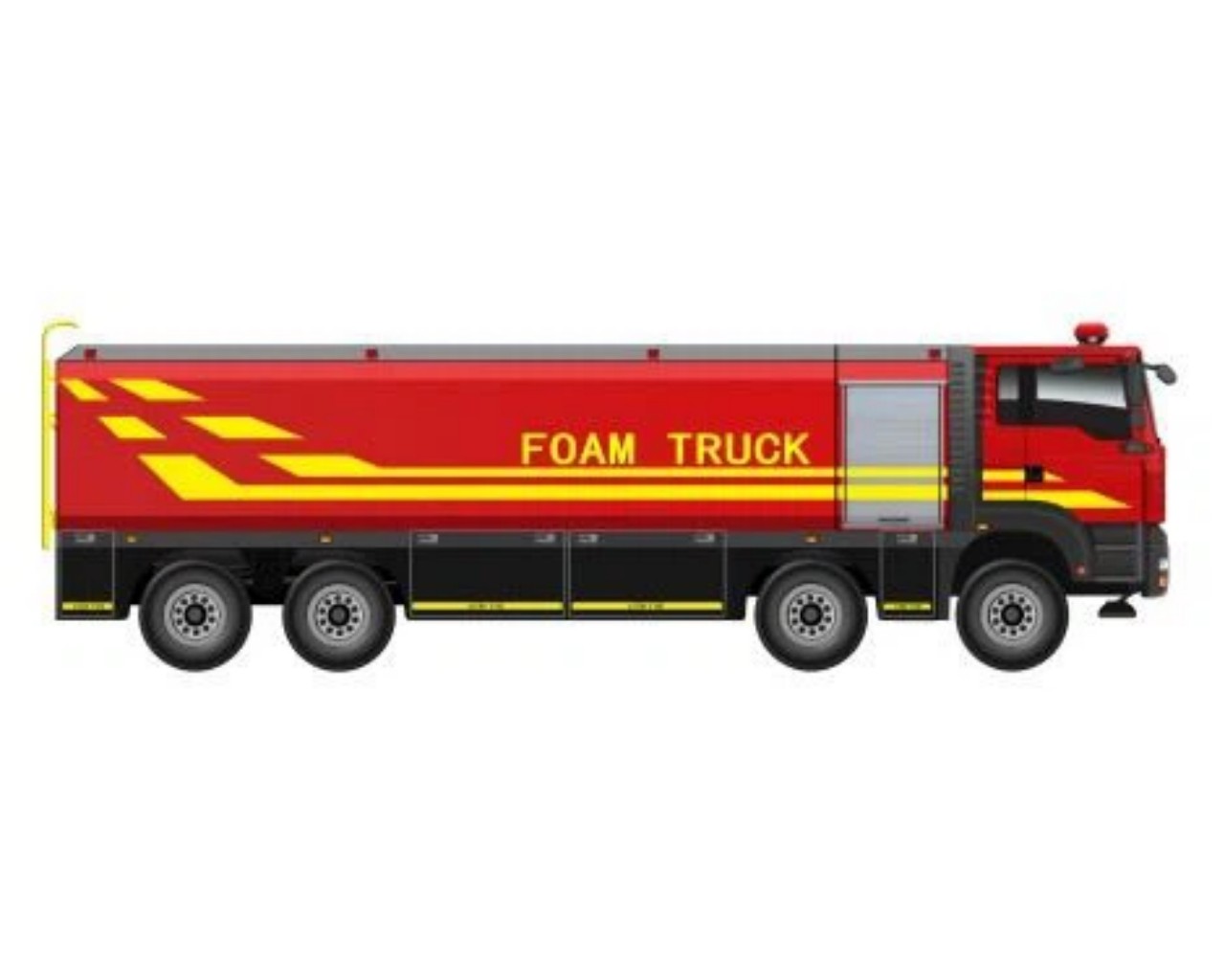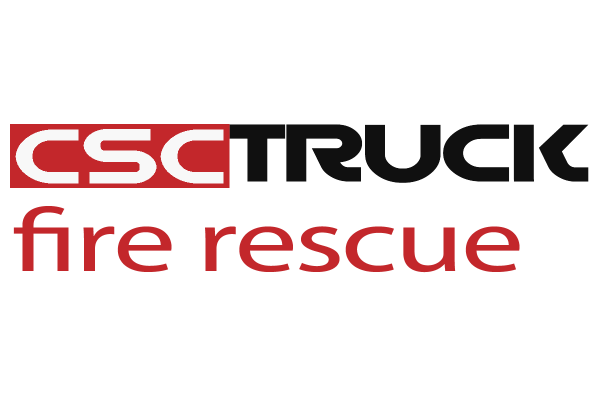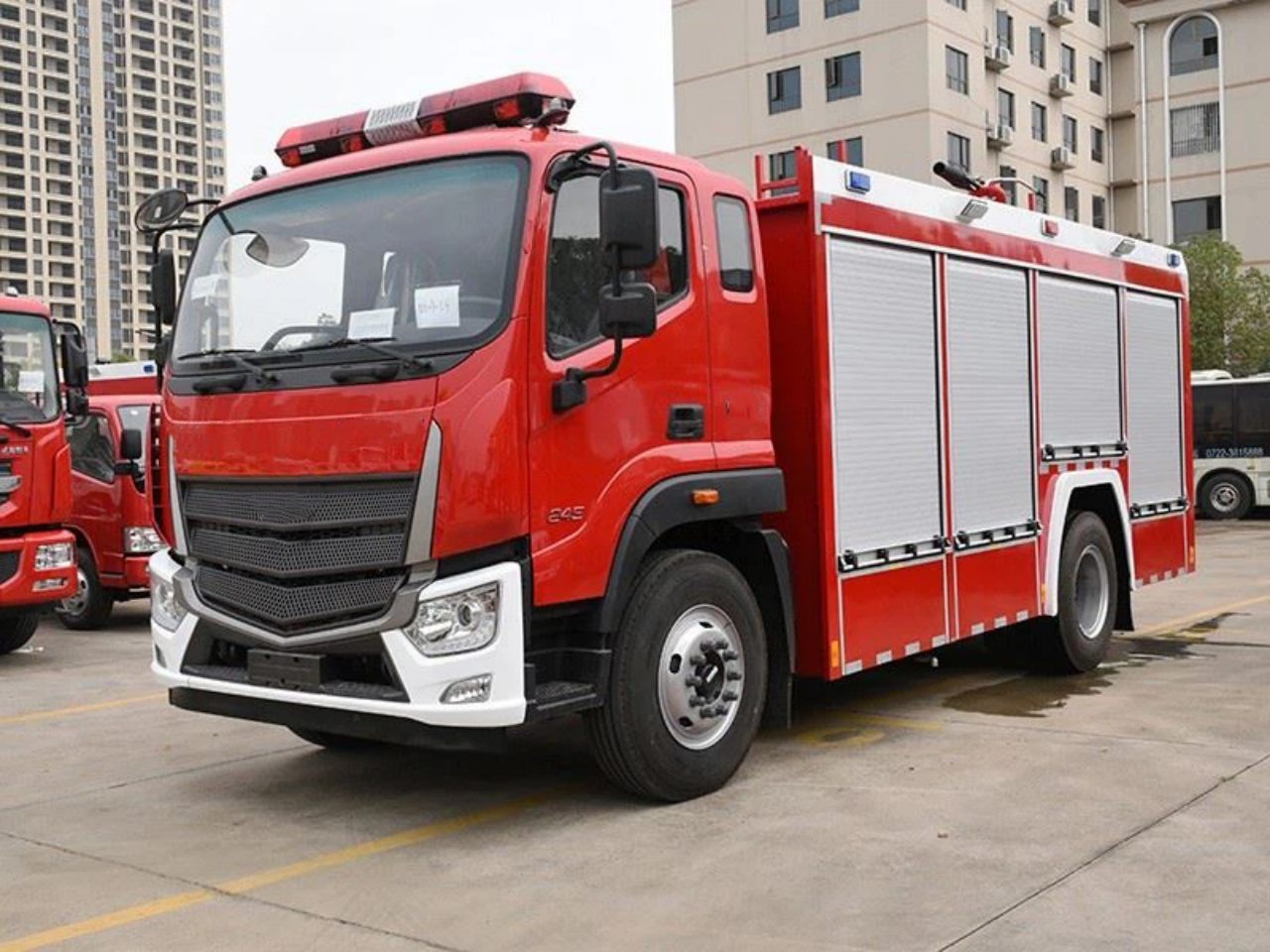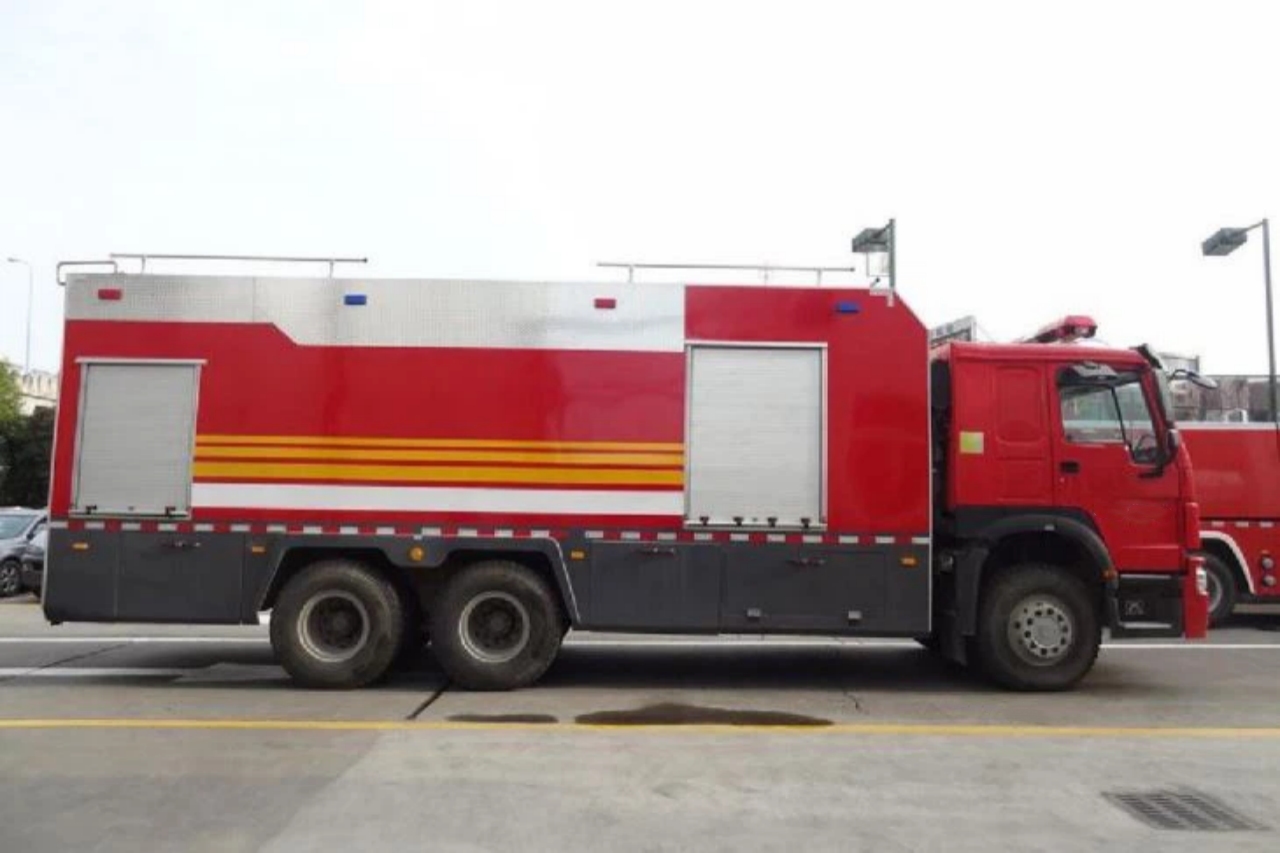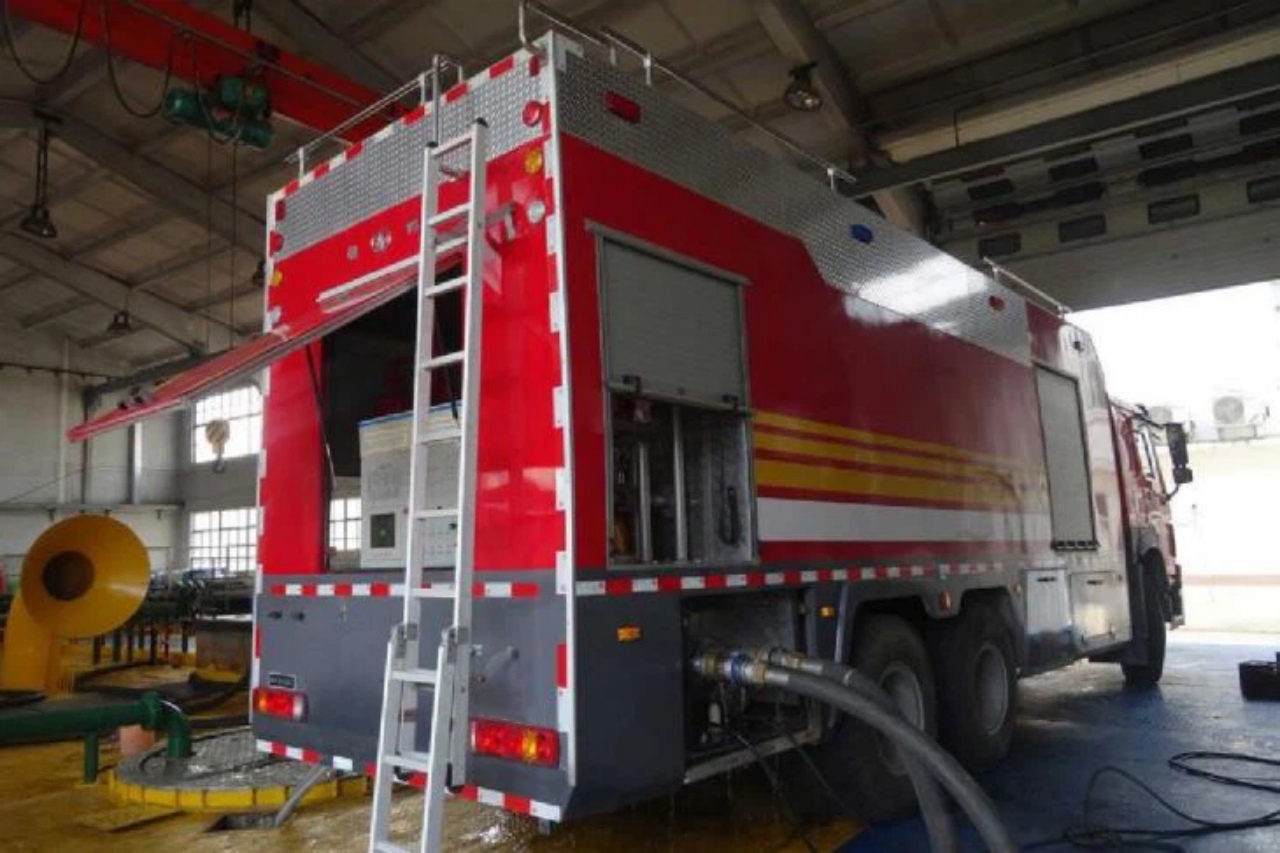In the realm of emergency response and firefighting, rapid and effective suppression of large-scale fires—particularly those involving flammable liquids or hazardous chemicals—demands more than traditional water-based systems. One critical innovation aiding fire departments and industrial firefighting units is the high-capacity foam transfer truck. These specialized vehicles are engineered to transport, store, and transfer massive quantities of firefighting foam concentrate to the frontlines, significantly enhancing suppression efforts where water alone is ineffective. This article explores the purpose, design, components, benefits, and applications of high-capacity foam transfer trucks in modern firefighting support operations.
Purpose and Role in Firefighting
Firefighting foam is a vital suppressant in tackling fires involving Class B materials—flammable and combustible liquids such as gasoline, oil, and chemicals. In large-scale industrial fires, petrochemical facilities, airports, and military installations, standard fire engines and tenders may not carry enough foam concentrate to sustain prolonged operations. This is where a high-capacity foam transfer truck becomes essential.
The primary purpose of the foam transfer truck is to resupply foam concentrate to fire engines, foam proportioning systems, or fixed fire suppression systems at the fire scene. It acts as a mobile logistics hub, allowing continuous operation without the need for frequent resupply trips, thus reducing downtime and improving firefighting efficiency.
Design and Configuration
A high-capacity foam transfer truck is typically built on a robust commercial truck chassis—often a 6×4 or 8×4 platform—with reinforced suspension and driveline components to support the heavy load of foam concentrate. Depending on mission requirements, these trucks may carry between 5,000 to 20,000 liters (approximately 1,320 to 5,280 gallons) of foam concentrate in specialized tanks.
Key Components Include:
- Foam Concentrate Tank(s):
- Made of stainless steel, polypropylene, or coated carbon steel to resist corrosion.
- May be partitioned for different types of foam concentrates (e.g., AFFF, AR-AFFF, FP, FFFP).
- Transfer Pump System:
- High-capacity positive displacement or centrifugal pumps rated at 600–1,200 LPM (liters per minute) or more.
- PTO (Power Take-Off) or auxiliary engine-driven to ensure independent operation from the chassis engine.
- Hose Reels and Transfer Lines:
- Equipped with large-diameter hoses (2″–4″) and quick-connect couplings for rapid deployment.
- Motorized reels improve speed and ease of hose handling.
- Control Panel and Flow Meters:
- Centralized operator controls for pump engagement, pressure regulation, and monitoring flow rates.
- Digital or analog flow meters to ensure accurate dosing during transfers.
- Heating and Insulation (Optional):
- For colder climates, tanks and pumps may feature insulation and heating systems to prevent foam degradation or freezing.
- Auxiliary Equipment:
- Storage compartments for fittings, hoses, adapters, and spill kits.
- Lighting systems, communication radios, and GPS for field coordination.
Operational Efficiency and Advantages
The high-capacity foam transfer truck dramatically increases the effectiveness of firefighting units by bridging the logistics gap between storage facilities and the fireground. Its advantages include:
- Extended Operational Endurance:
By ensuring a continuous foam supply, these trucks allow incident commanders to sustain suppression activities for hours without interruption. - Rapid Deployment:
These trucks are typically designed for quick deployment, allowing foam to be transferred within minutes of arriving on the scene. - Multi-Agency Support:
Due to their large capacity, a single foam transfer truck can support multiple fire engines or foam systems, especially in mutual aid situations. - Reduced Dependency on On-Site Storage:
Industrial sites may have limited foam stocks. A foam transfer truck reduces the need for large on-site reserves by offering mobile replenishment. - Versatility and Interoperability:
With universal coupling systems and adapters, foam transfer trucks can connect to a variety of equipment across different agencies or jurisdictions.
Applications in Real-World Scenarios
The importance of high-capacity foam transfer trucks becomes particularly evident in complex fire scenarios where volume and coordination are critical. Common deployment environments include:
1. Petrochemical Facilities and Oil Refineries:
Massive hydrocarbon fires demand immense volumes of foam. Transfer trucks resupply monitors, deluge systems, and mobile foam units throughout the operation.
2. Airports and Military Bases:
Aircraft fuel fires require immediate foam suppression. These trucks assist airport fire and rescue (ARFF) units in maintaining foam availability during extended emergencies.
3. Tank Farms and Bulk Fuel Terminals:
Fixed suppression systems around large fuel storage tanks often depend on an external foam supply. Foam transfer trucks can feed these systems or supply firefighting vehicles directly.
4. Maritime and Port Facilities:
In case of shipboard fires or fuel terminal incidents, foam transfer trucks serve as critical supply links between foam depots and fireboats or dockside units.
5. Forest Interface and Wildland Urban Areas:
While less common in forest fires, some wildland-urban interface incidents involving industrial structures or chemical storage require foam support.
Safety and Environmental Considerations
Foam concentrates, especially those containing PFAS (Per- and polyfluoroalkyl substances), are under increasing scrutiny due to environmental concerns. Modern foam transfer trucks are being designed with:
- Secondary containment systems are used to prevent spills.
- Closed-circuit transfer mechanisms to avoid exposure and evaporation.
- Compatibility with fluorine-free foams supports eco-friendly firefighting transitions.
Operators must also be trained in safe handling, PPE use, spill response, and foam-specific hazards. Regular inspection and maintenance of tanks, valves, and transfer systems are critical to operational safety and environmental compliance.
Future Trends and Innovations
The role of foam transfer trucks continues to evolve with emerging technologies. Some notable trends include:
- Automation and Remote Monitoring:
Advanced systems allow for remote control of pumping operations and real-time data telemetry on foam volume, pressure, and flow. - Hybrid and Electric Drive Platforms:
In line with sustainability goals, some manufacturers are exploring hybrid or fully electric foam transfer trucks to reduce emissions. - Modular and Skid-Mounted Systems:
Foam modules that can be mounted on different chassis or used as standalone units are increasing operational flexibility. - Smart Foam Inventory Management:
Integration with centralized incident command software allows tracking of foam usage, planning resupply, and optimizing foam logistics.
Conclusion
High-capacity foam transfer trucks are indispensable assets in the modern firefighting arsenal. By ensuring a reliable and rapid supply of foam concentrate, they enhance the effectiveness of fire suppression operations across industrial, municipal, and military settings. As fire risks evolve and environmental regulations tighten, these trucks will continue to adapt with smarter technologies, greener materials, and greater interoperability, ensuring their vital role in safeguarding lives, property, and the environment remains secure.
